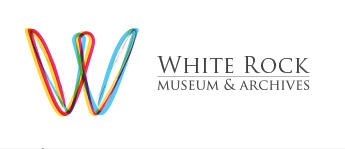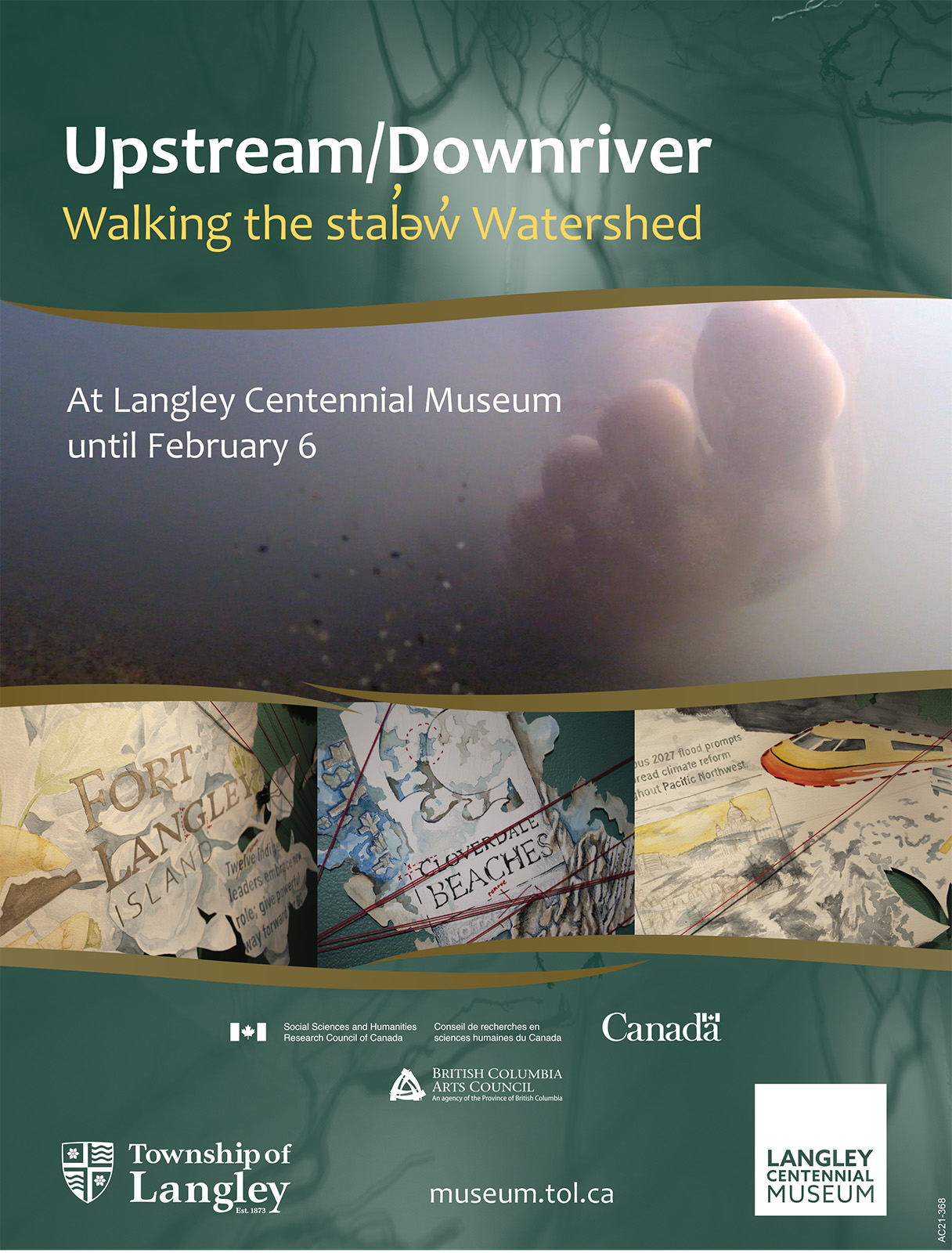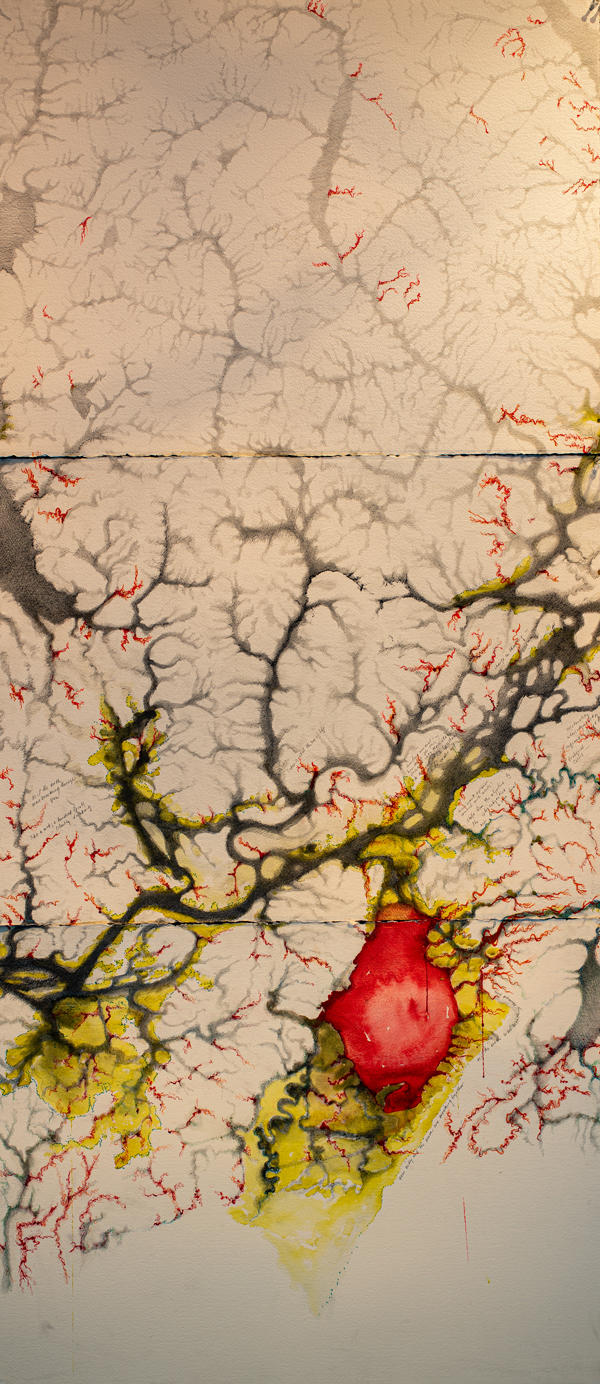
the Project
Upstream/Downriver Walking the stɑl̓əw̓ Watershed is a collaborative research-creation project that addresses climate change at the local, granular scale of the lower Fraser River watershed. Artists walked with experts from a wide range of backgrounds–Indigenous knowledge holders, scientists, philosophers and poets–inviting their observations on climate impacts along the lower Fraser Valley watershed. Reflecting on the knowledge shared during these walks, the artists have created immersive installation experiences in the Langley Centennial Museum and White Rock Museum + Archives.
Combining video, sound, installation and drawing to connect viewers to the code red realities of climate impacts in our region, the work also gives voice to the river, pointing the way to how we may reimagine our relationship with the land and learn to walk in a good way on this territory we call home.
Lower Fraser River watershed and climate change
Commonly referred to as the Fraser River, stɑl̓əw̓ is the hən̓q̓əmin̓əm̓ word for the Fraser, or “big river.” Upstream/Downriver: Walking the stɑl̓əw̓ Watershed engages experts in conversations about the impacts of climate change at the local, granular scale of the Fraser River Watershed.
Braiding ways of knowing into a soundscape
While walking through the Fraser River watershed, we asked experts from a wide range of disciplines about climate change. We listened as they told us about the stɑl̓əw̓ and about how climate change is affecting the watershed. To create the soundscape we braided together analytical and relational voices–along with the voice of the river–into conversational triads. Thus the soundscape weaves more-than-human relationality, academic disciplines and multiple ways of knowing, together into new conversations. Indigenous traditional knowledge and geology, biology, math and poetry, urban geography and philosophy, young and elder, all voices agreed, climate change is serious, human caused, and the time to act is now. We heard about the need to act, and the need to listen; to one another, to the river, to the land. Most importantly we learned to listen to the river sing and to the land breathe. No one way of knowing is sufficient, all ways of knowing are necessary to understand climate change in the lower stɑl̓əw̓ watershed.
Process
Saturated in data, we incubated possibilities, condensed conversations and followed informational trails till metaphors began to emerge. Creighton’s video work immerses viewers in the river, seeking to dissolve boundaries between human and environment. Hale speculates forward, imagining possible futures in shaped, collaged drawings that humanize the data. Grimm’s drawing maps the bloodline of the stɑl̓əw̓, tracing the lost tributaries, waterways and lakes along with the future high tide flood lines of the lower Fraser watershed. Grimm and Stewart bandage cedar roots and willow branches together, drawing a river with material and light through the gallery space.
Project Siyá:m – Patricia Victor, TWU University Si:yam
Artists – Alysha Creighton MFA, Josh Hale MFA, Erica Grimm PhD
Collaborators – Tracie Stewart BFA/arborist, Emily Arnett BA
Walkers in chronological order according to the date of walking – Andrew Victor, Chief Cheam Nation; Sam Pimentel, PhD mathematics, glaciology; Maxwell Ofosuhene, PhD urban geography; Heesoon Bai, PhD philosophy; Katharine Bubel, PhD eco-literature; Tim Cooper, PhD engineering physics; Bruce Shelvey, PhD history, David Clements, PhD biology; Sesmalot Gabriel, Kwantlen Language Keeper; Annelyn Victor Cheam youth; David Jordan, PhD earth sciences geology
Sound Collaborators – Nelson Bergen Video Producer, Susanna Barlow MFA
Thanks to – Perpetual Vegetable Co. and Sodexo for their help with the installation
LOCATIONS:
Spruce Gallery
Kwantlen Polytechnic University (KPU) – Surrey
Sept. 5 – Sept. 30, 2022



Upstream/Downriver: Walking the stɑl̓əw̓ Watershed is supported in part by funding from the Social Sciences and Humanities Research Council.
